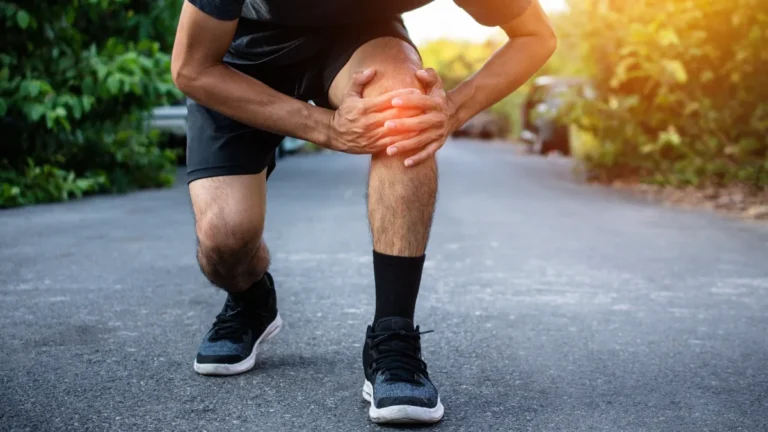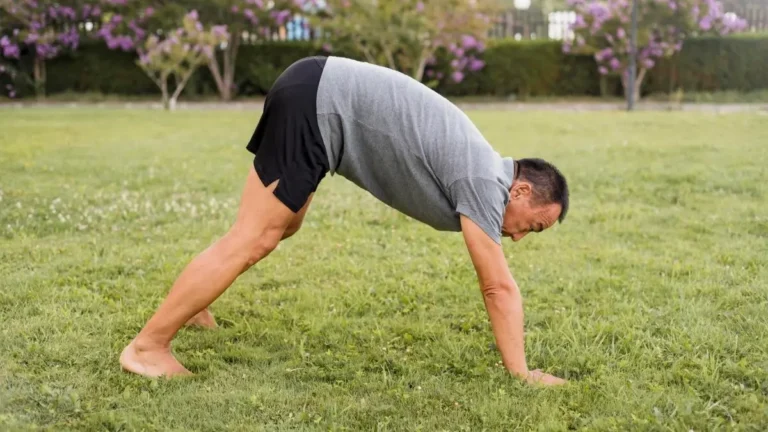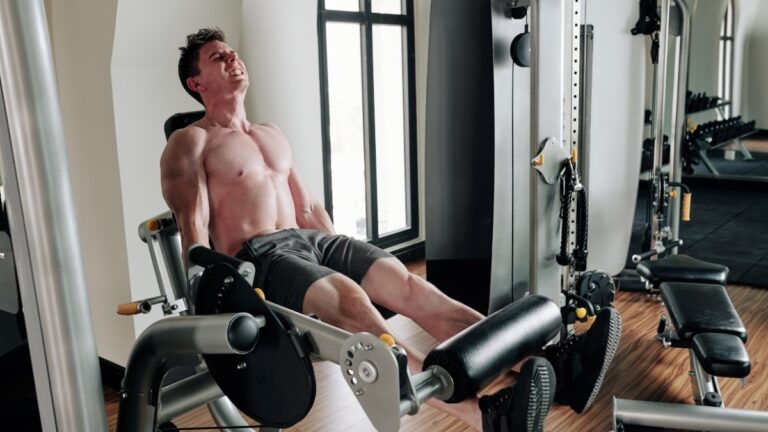The “Bedroom Floor” Exercise a Harvard Doc Says Every Senior Must Do to Avoid Falls
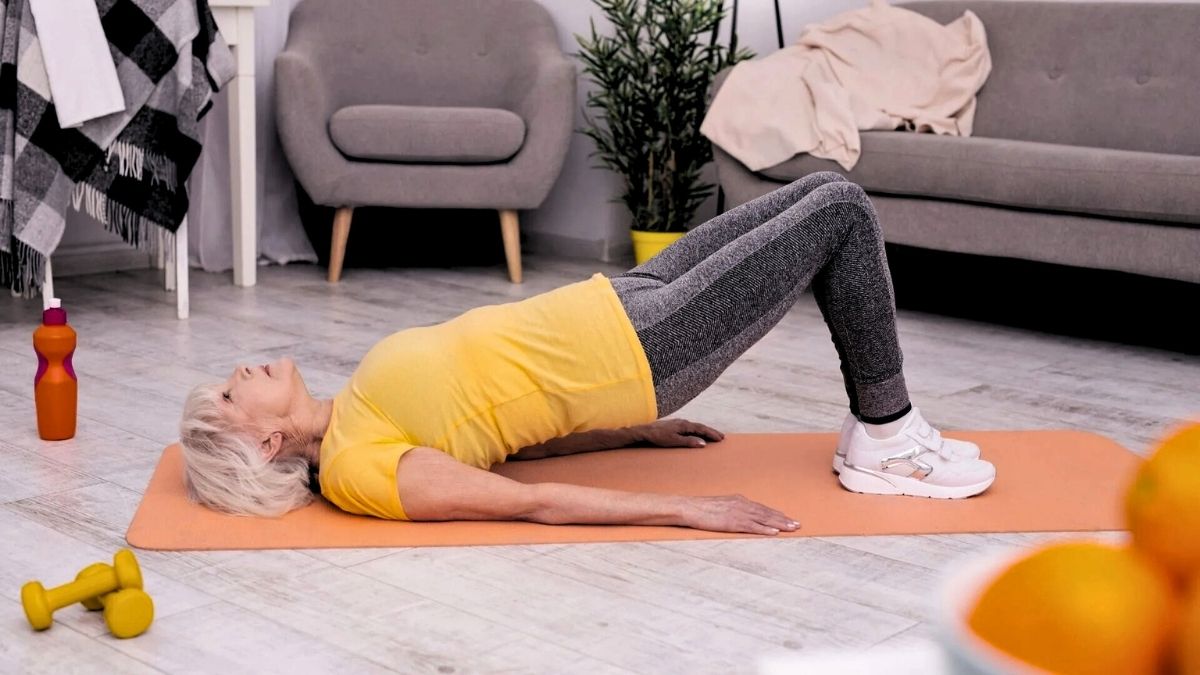
Every 11 seconds, an older adult is treated in the emergency room for a fall-related injury. But Harvard researchers have identified one simple bedroom floor exercise that could change these statistics. This isn’t another balance trick that barely works.
You’re probably reading this because you’re scared of falling. Maybe you’ve already had a close call, or you know someone who got hurt. That fear is making you avoid things you used to love – gardening, playing with grandkids, even walking to the mailbox.
Here’s what’s really scary: most seniors can’t get up from the floor if they fall. They lie there for hours, sometimes days, waiting for help. This bedroom floor exercise for seniors changes that completely.
The method comes from Harvard Medical School research that studied over 150 people. The results were so good that doctors now recommend it as the top fall prevention exercise. People who learned it cut their fall risk by 32% in just 8 weeks.
But this isn’t just about the numbers. It’s about getting your life back. When you know you can handle a fall, you stop living in fear. You start doing the things that make life worth living again.
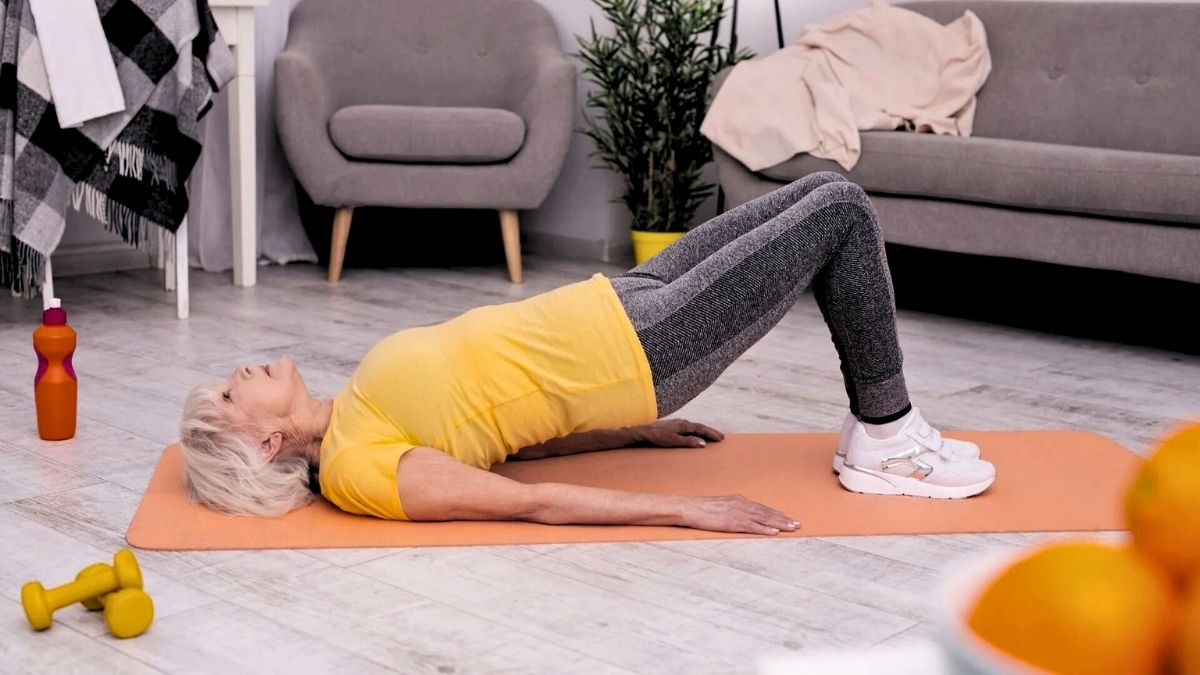
In this guide, you’ll learn exactly how to do the bedroom floor exercise safely. We’ll start super easy and build up slowly over 8 weeks. You’ll also discover why Harvard research shows this works better than other balance exercises.
Most importantly, you’ll see how this one exercise fits into a complete fall prevention plan. Because staying safe isn’t just about getting stronger – it’s about making smart changes to your home and daily habits too.
By the end, you’ll have everything you need to feel confident and secure again. No more tiptoeing through your own house. No more saying no to family activities because you’re afraid. Just the peace of mind that comes from knowing you can handle whatever happens.
What Is the Harvard-Recommended Bedroom Floor Exercise?
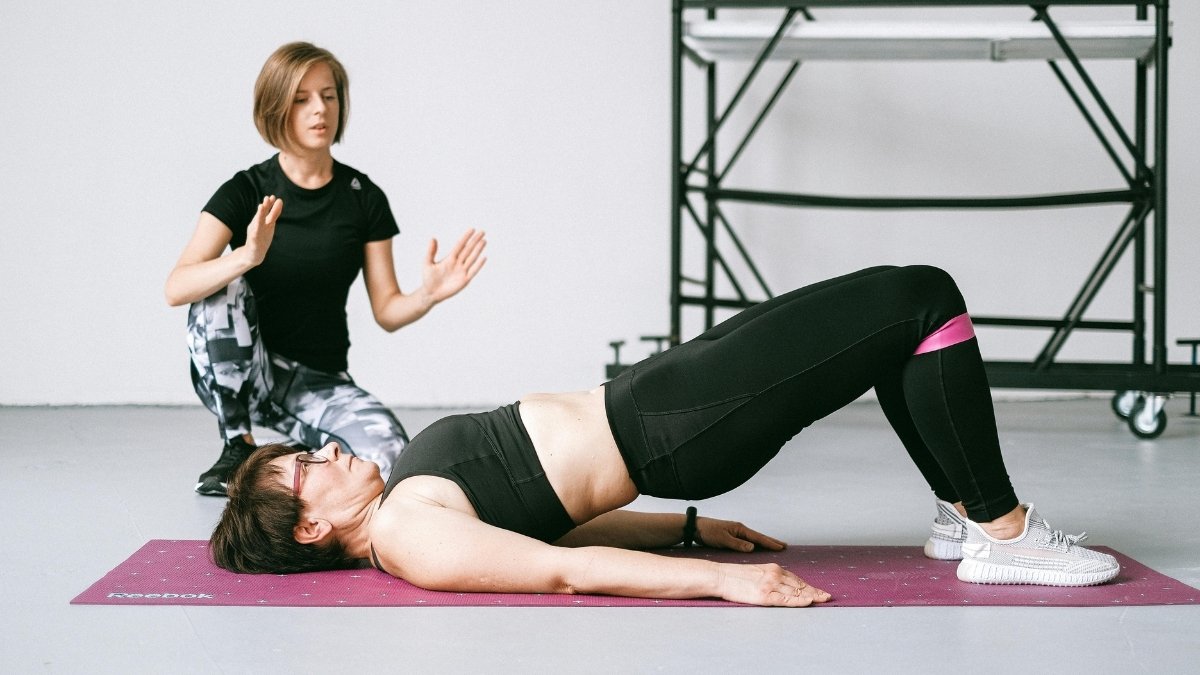
The Harvard-recommended bedroom floor exercise is called the “Supine-to-Stand Transfer Training.” It sounds fancy, but it’s simple. You practice getting up from the floor in your bedroom where it’s safe.
Dr. Lewis Lipsitz at Harvard Medical School created this method after studying why seniors fall. He found that most people over 65 can’t get up from the floor safely. This scares them so much they stop moving around their homes.
Here’s why it’s called the “bedroom floor” method. Your bedroom has carpet or rugs that cushion falls. It has a bed nearby for support. And it’s private, so you won’t feel embarrassed while learning.
This exercise works differently than regular balance training. Most balance exercises keep you standing up. This one teaches you what to do when you’re already down. It builds the exact muscles you need to get back up.
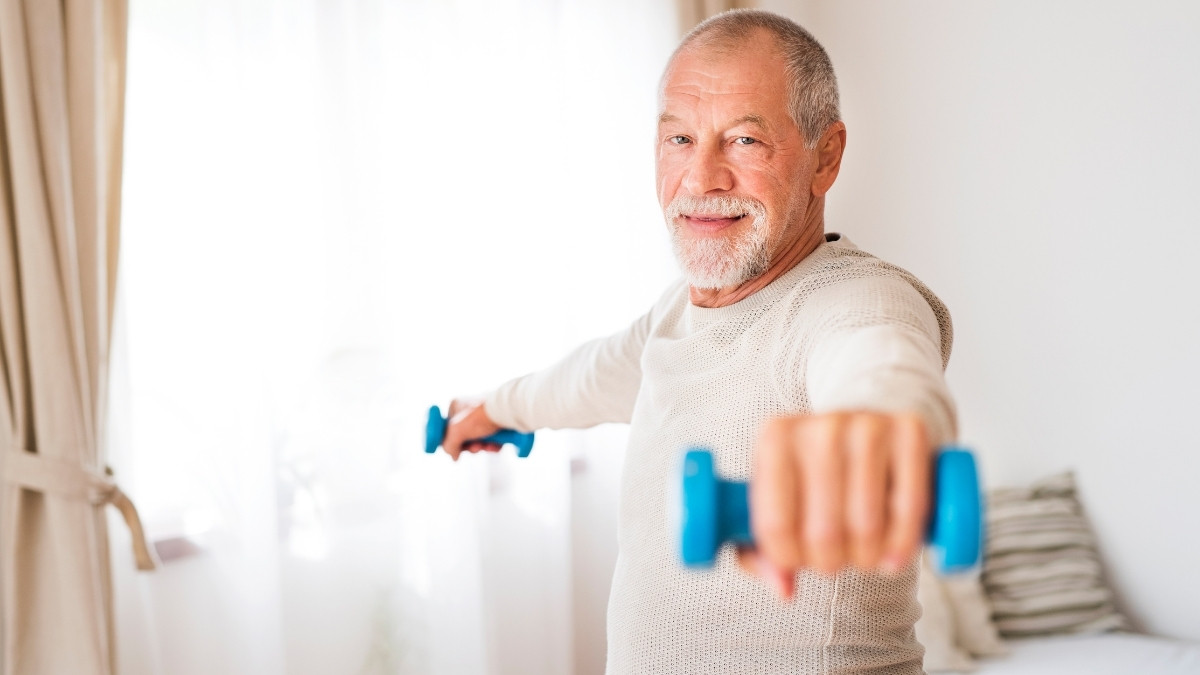
The results speak for themselves. In Harvard’s 8-week study, seniors cut their fall risk by 32%. That’s huge when you think about hospital bills and broken bones. Even better, 78% of people learned to get up from the floor without help.
The time improvements were amazing too. People got 40% faster at standing up from the floor. What used to take 2 minutes now took about 70 seconds. For a senior living alone, those extra seconds could save their life.
This bedroom floor exercise for seniors works because it’s practical. You’re not just doing random movements. You’re practicing a real-life skill that could keep you out of the emergency room.
Step-by-Step Guide: How to Perform the Bedroom Floor Exercise Safely
You want to try this bedroom floor exercise for seniors, but you’re scared you’ll get stuck down there. That’s normal. Every beginner worries about the same thing.
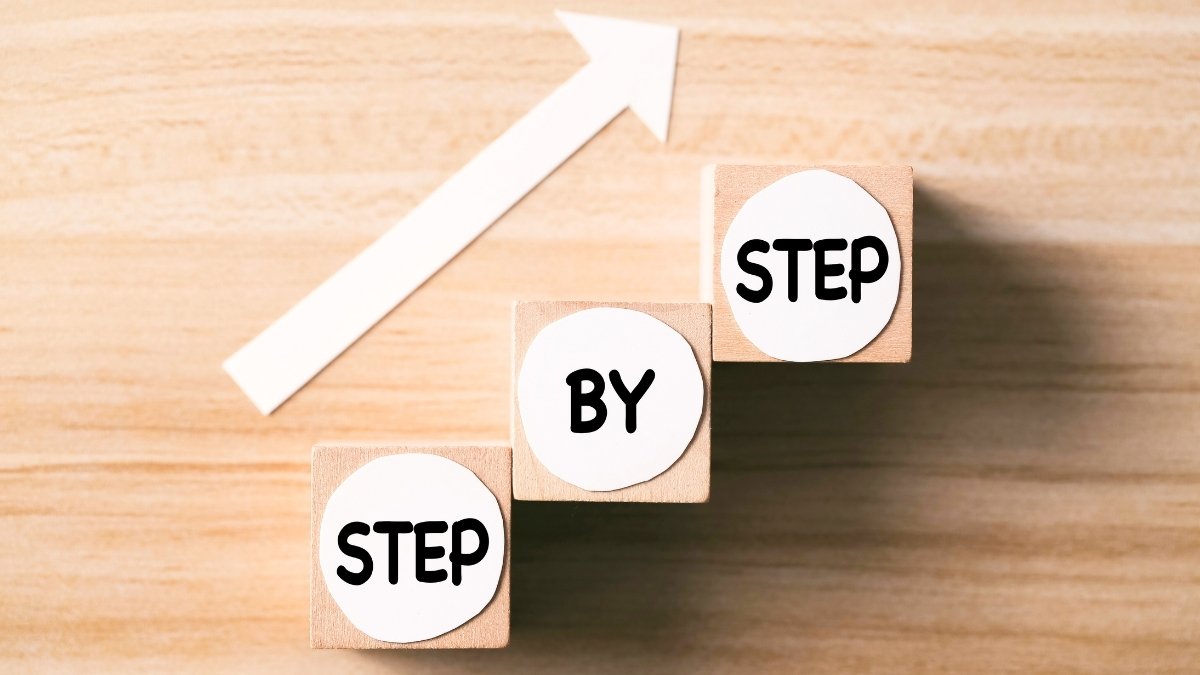
This guide breaks it down into baby steps. You’ll start super easy and get stronger each week. By week 8, you’ll feel confident getting up from floor safely.
Don’t rush this. Your safety matters more than speed. Take as long as you need on each phase.
What You Need Before You Start
Clear a 6-foot space next to your bed. Remove any rugs that might slip. Make sure someone else is home the first few times you practice.
Wear comfortable clothes that don’t restrict movement. Yoga pants or loose shorts work best. Skip the socks – bare feet grip better.
Keep a phone within reach. Have a sturdy chair nearby if you need extra help. This isn’t being weak – it’s being smart.
Phase 1: Controlled Lowering (Weeks 1-2)
Goal: Learn to get down to the floor without falling hard.
Start standing next to your bed. Hold the mattress edge with both hands. Slowly lower one knee to the floor, then the other.
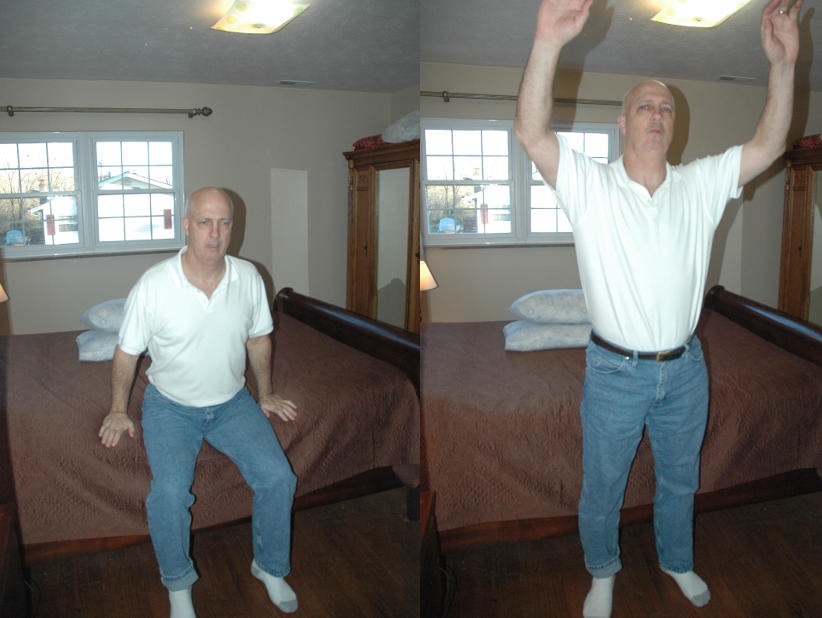
Now sit back on your heels. Use your hands on the bed to control how fast you move. This should feel controlled, not scary.
Practice this 3 times a day for 2 weeks. Once you can kneel without using your hands for support, move to phase 2.
Phase 2: Floor Positioning Practice (Weeks 3-4)
Goal: Get comfortable lying down and sitting up from the floor.
From your kneeling position, put one hand on the floor. Slowly lower your hip to one side until you’re sitting. Then lie down on your back.
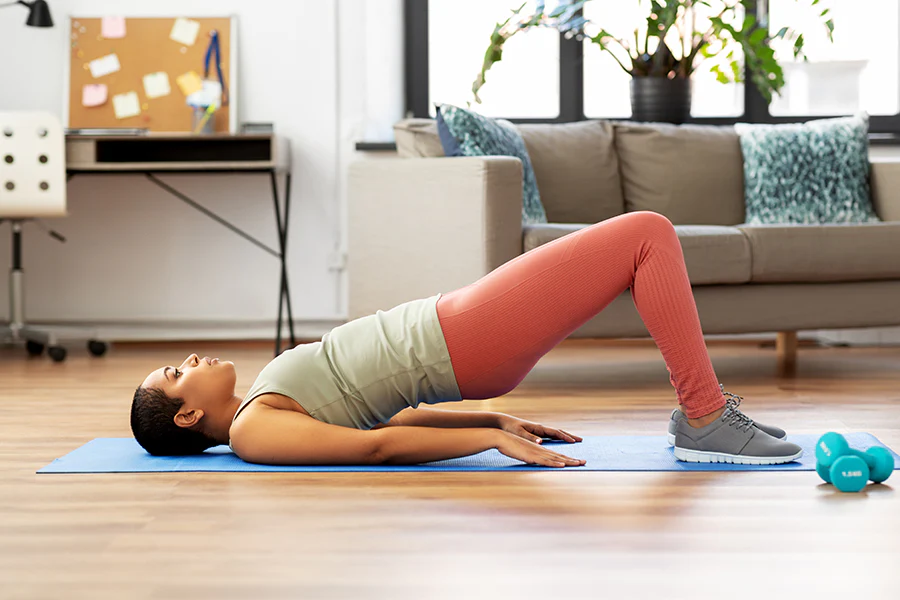
Practice rolling from your back to your side. Then push up to sitting using your arms. The bed is still there if you need it.
Do this 5 times each practice session. When you can sit up without using the bed, you’re ready for phase 3.
Phase 3: Rising Technique Mastery (Weeks 5-6)
Goal: Learn the safest way to stand up from the floor.
From sitting on the floor, roll to your hands and knees. Bring one foot forward so you’re in a lunge position. Keep the other knee on the ground.
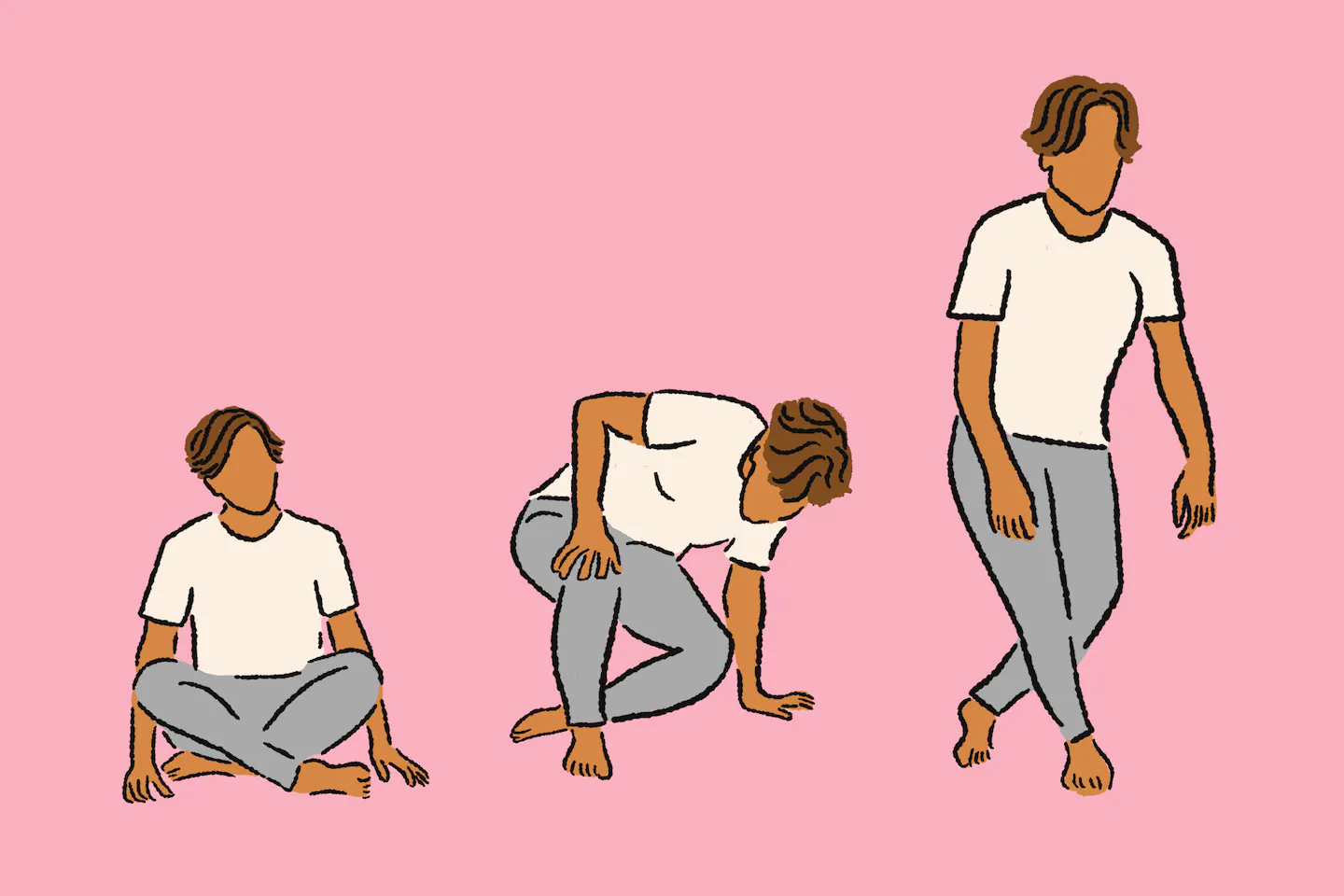
Push through your front leg to stand up. Use your hands on your thigh for extra support. This is the technique that prevents falls.
Master this movement before moving to the final phase. Your muscles need time to remember the pattern.
Phase 4: Fluid Movement Integration (Weeks 7-8)
Goal: Put it all together in one smooth motion.
Now you’ll practice the full sequence. Start standing, lower to kneeling, sit on the floor, lie down, then reverse everything to stand back up.
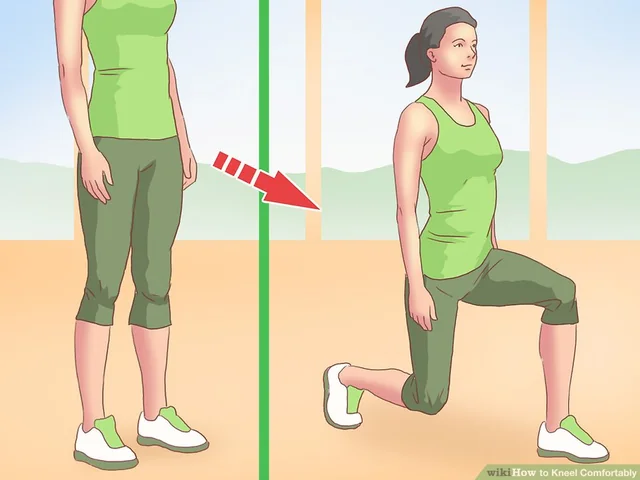
Time yourself, but don’t rush. Smooth and safe beats fast and dangerous every time. Most people take 60-90 seconds by week 8.
Practice twice a day during this phase. You’re building muscle memory that could save your life someday.
Common Mistakes That Slow Your Progress

Mistake #1: Trying to stand straight up from sitting. This puts huge strain on your knees and often fails. Always go to hands and knees first.
Mistake #2: Holding your breath during the movements. Breathe normally throughout each step. Your muscles need oxygen to work properly.
Mistake #3: Practicing on hard floors too early. Start on carpet or a yoga mat. Hard surfaces come later, after you’ve mastered the basics.
When to Move to the Next Phase
Your body will tell you when you’re ready. You should feel confident and controlled in your current phase before advancing. If something feels scary or unstable, stay put another week.

Here’s the test: Can you do your current phase 5 times in a row without getting tired or shaky? If yes, you’re ready to progress.
Remember, some people need 10 weeks instead of 8. That’s perfectly fine. Getting up from floor safely is more important than following a strict timeline.
Modifications for Different Mobility Levels
If you have knee problems: Place a pillow under your knees during kneeling phases. Take longer breaks between attempts.
If you have hip issues: Practice sitting on the edge of a low stool first. Graduate to the floor when your hips feel stronger.
If you use a walker: Keep it within arm’s reach during early phases. You can still learn this exercise – it just takes patience.
Beyond the Exercise: Complete Fall Prevention Strategy for Seniors
The bedroom floor exercise is powerful, but it’s just one piece of your fall prevention plan. You need to fix the things in your home that cause falls too. Most falls happen because of simple hazards you can remove today.
Think about it this way: learning to get up from the floor is your backup plan. Your main goal is never falling in the first place.
Here’s how to build a complete safety net that keeps you upright and confident.
Home Safety Changes That Stop Falls Before They Happen
Walk through your home like a detective. Look for anything that could trip you up. Loose rugs are the biggest culprit – they cause 30% of home falls.
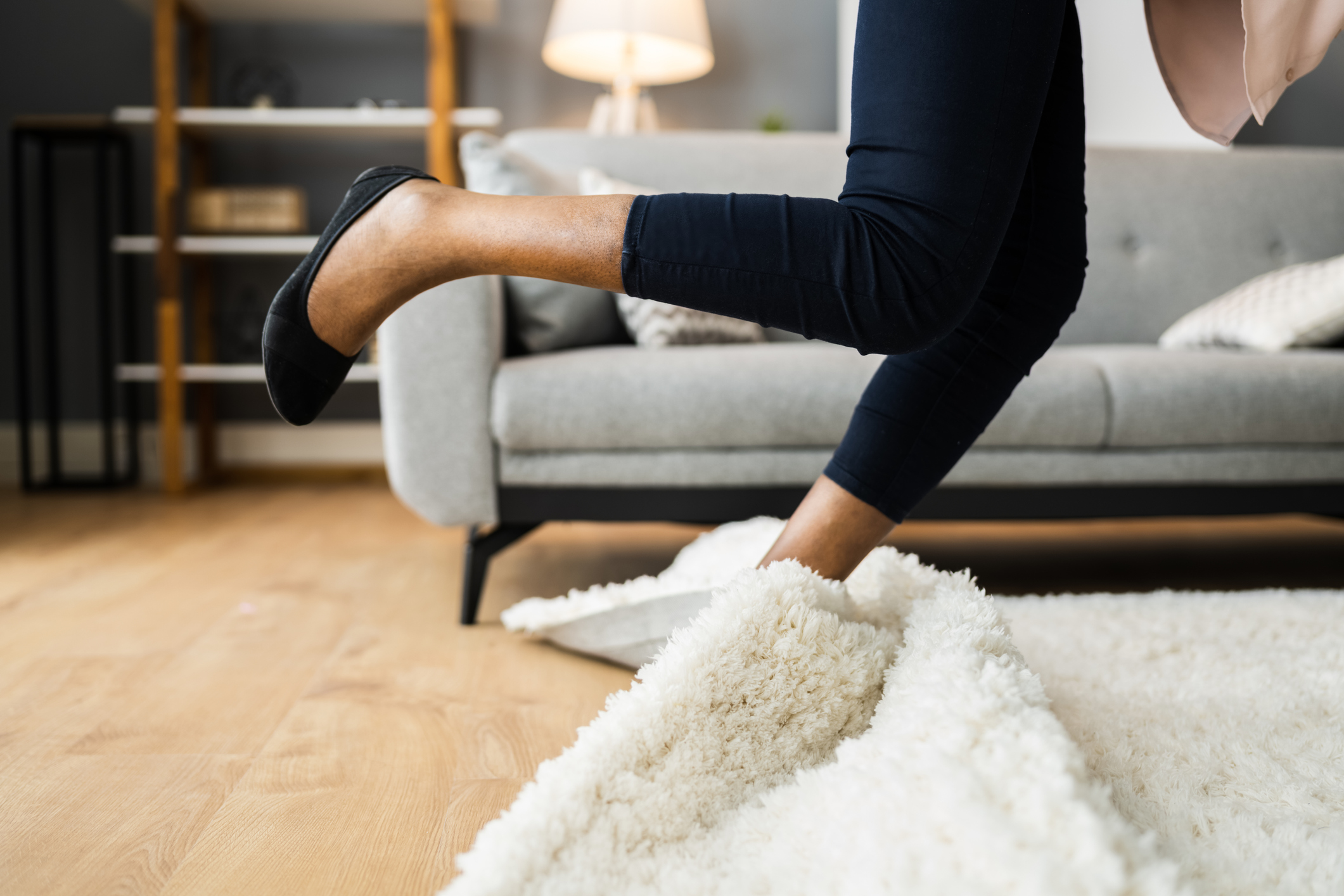
Either throw them out or use double-sided tape to stick them down tight. Add grab bars in your bathroom, even if you don’t think you need them yet. They’re cheap insurance.
Put night lights in hallways and bathrooms. Most senior falls happen in the dark when people are half-asleep and rushing to the bathroom.
Other Harvard-Backed Activities for Senior Balance Training
The bedroom floor exercise works best when combined with other movements. Harvard researchers recommend tai chi classes for seniors. The slow, controlled movements improve balance and strength.
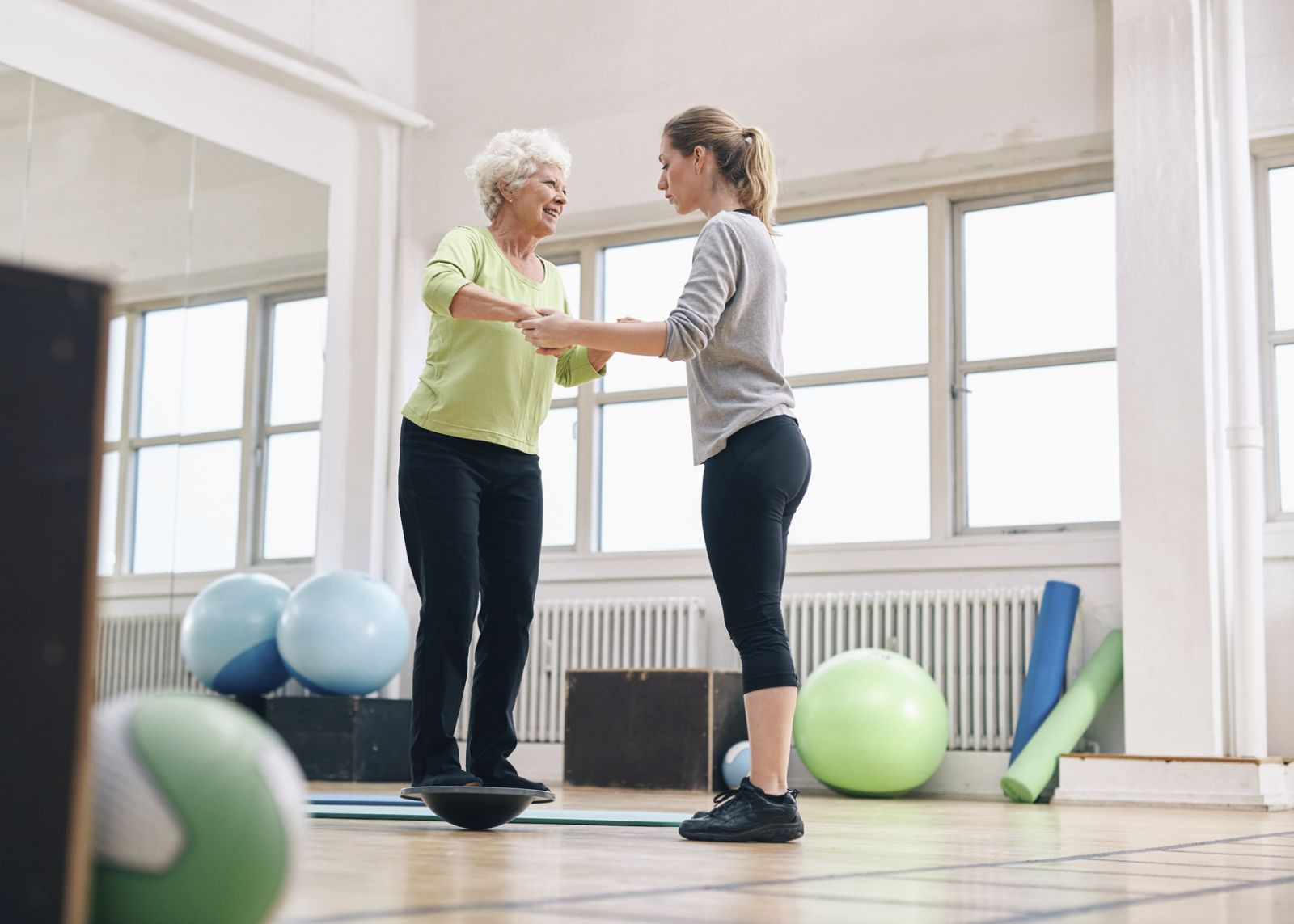
Walking backwards for 2 minutes a day also helps. It forces your brain to pay attention to balance in a new way. Do this holding onto a kitchen counter at first.
Standing on one foot while brushing your teeth builds stability. Start with 10 seconds and work up to 30 seconds on each foot.
What You Eat Affects How You Fall

Low vitamin D makes your muscles weak and your bones brittle. Ask your doctor to test your levels. Most seniors need supplements, especially if they don’t get much sun.
Dehydration causes dizziness, which leads to falls. Drink water throughout the day, not just when you’re thirsty. Your pee should be light yellow – that’s the easy test.
Some medications make you dizzy or drowsy. Review all your pills with your pharmacist twice a year. They might find combinations that increase your fall risk.
When to Call in Professional Help
If you’ve fallen twice in the past year, it’s time for a physical therapist. Medicare covers fall prevention visits, so cost isn’t an excuse. They’ll spot problems you miss.
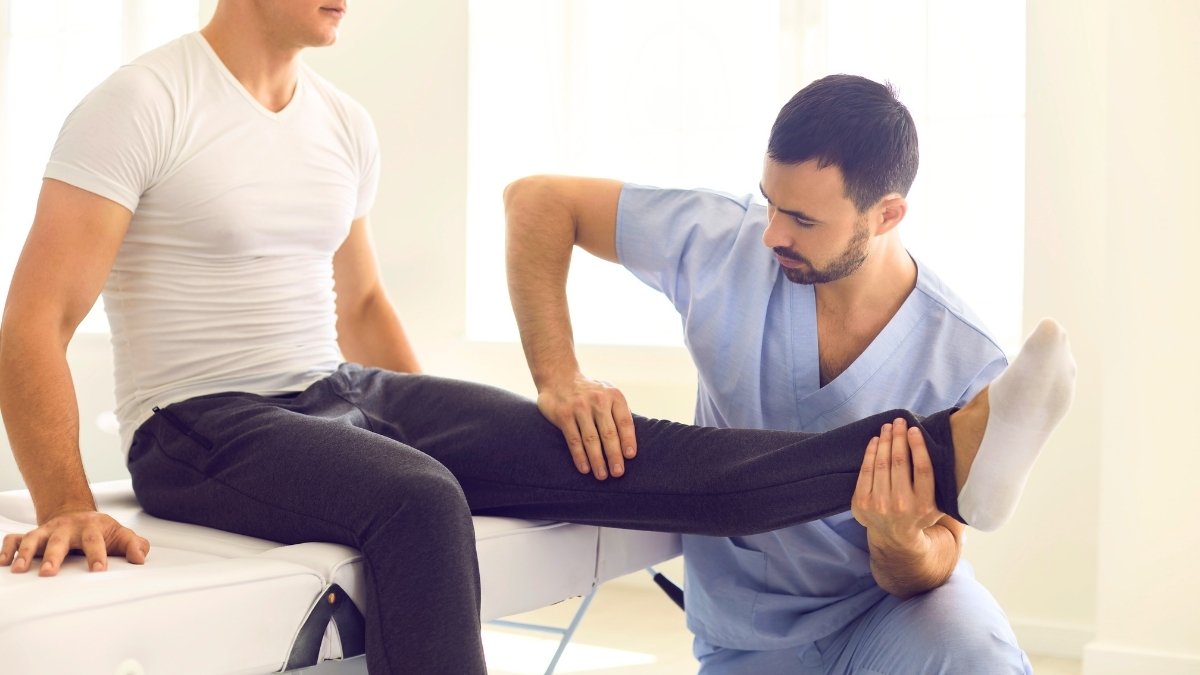
An occupational therapist can walk through your home and suggest specific changes. They see hazards that look normal to you. This visit often prevents the fall that would put you in the hospital.
Your eye doctor matters too. Poor vision causes 20% of falls. Get checked yearly, and make sure your glasses fit properly.
Technology That Keeps You Safe
Medical alert systems aren’t just for emergencies anymore. New models detect falls automatically and call for help. Some work outside your home too, which is great for active seniors.

Smart pill dispensers remind you to take medications on time. Missed blood pressure pills can cause dizziness and falls the next day.
Motion sensor lights turn on automatically when you get up at night. They’re better than regular night lights because they’re brighter and only activate when needed.
Building Your Safety Support Team
Tell your family about your fall prevention plan. They can help spot changes in your walking or balance before you notice them. Fresh eyes see things you might miss.

Join a senior exercise class or walking group. Having regular activity partners means someone will notice if you’re absent. This social safety net catches problems early.
Make friends with your neighbors, especially younger ones. They can help with tasks that put you at fall risk, like changing light bulbs or cleaning gutters.
Your Fall Prevention Checklist
This week:
- Remove or secure all loose rugs
- Install night lights in hallways and bathrooms
- Test your current medications with a pharmacist
This month:
- Schedule eye and hearing exams
- Add grab bars in bathroom and shower
- Start practicing standing on one foot daily
This quarter:
- Get vitamin D levels tested
- Consider a home safety evaluation
- Research medical alert systems in your area
Red flags to watch for:
- Feeling dizzy when you stand up quickly
- Trouble seeing steps or curbs clearly
- Feeling unsteady after taking new medications
The bedroom floor exercise gives you confidence, but these other steps prevent most falls from happening at all. Work on both – your future self will thank you.
Lastly:
The bedroom floor exercise for seniors isn’t magic, but it’s close. Harvard research proved that people who learn this simple skill cut their fall risk by 32%. More importantly, they get their confidence back.
You now know exactly how to practice getting up from the floor safely. Start with Phase 1 this week – just the controlled lowering next to your bed. Take your time and be patient with yourself.

But remember, this exercise is just one part of staying safe. Remove those loose rugs in your hallway. Add grab bars in your bathroom. Get your vision checked. Fall prevention works best when you tackle it from all angles.
The best part? You don’t have to do this alone. Your doctor wants to help you stay independent. Physical therapists love working with seniors who are motivated to stay safe.
Start with the beginner modifications today, and consult your healthcare provider to create a personalized fall prevention plan. They might suggest other exercises or safety changes specific to your home and health.

